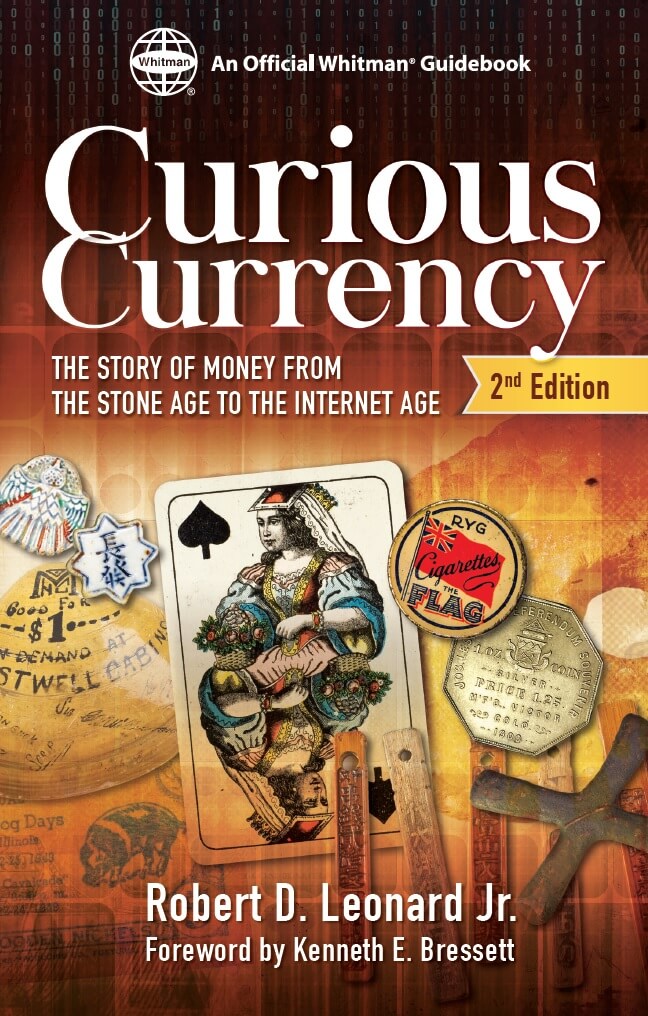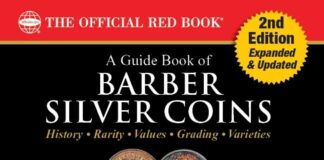
Whitman Publishing has announced the release of the second edition of Robert D. Leonard Jr.’s award-winning “Curious Currency: The Story of Money from the Stone Age to the Internet Age”.
The first edition of “Curious Currency” earned the Numismatic Literary Guild’s prestigious “Best Specialized Book on World Coins” award. The updated second edition includes new information from the most recent era of the money spectrum – PayPal and e-gold, proximity payments, cellphone payments, and cryptocurrencies like bitcoin.
The rest of the book is a treasure chest of cold, hard cash – and also feathery, leathery, tiny, gigantic, edible, and incredible cash. Leonard, a fellow of the American Numismatic Society and author of more than twenty studies on specific unusual monies, gives a colorful, entertaining, and authoritative tour of hundreds of strange things people have used as money through the ages, including:
- woodpecker scalps, whiskey, and gigantic stones
- wooden nickels, porcelain tokens, and playing cards
- elephant tails, iron nails, and whale teeth
- ostrich shells, bricks of tea, blocks of salt, human skulls, and more
The essence of Leonard’s exploration is to answer the question, “What is money?” He writes, “We use it every day without giving it a thought. But money isn’t limited to coins and paper. It includes a wide range of so-called primitive or traditional currency, surrogates for cash, and even things that are quite invisible. The study of these odd and curious monies has lessons for our economy today.”
Kenneth Bressett, Editor Emeritus of the “Guide Book of United States Coins”, calls “Curious Currency” “a fresh approach to understanding the nature of money . . . an entertaining overview . . . a provocative study.”
David Bowers, past president of the American Numismatic Association, says, “Bob Leonard’s magnificent book is the ‘missing link’ in hobby publications. We know about silver dollars, Gold Certificates, colonial coins, and ancient decadrachms, but odd and curious money is equally important and fascinating. The subject is strange and wondrous. This is money like you’ve never seen it before.”
Scott Semans, expert and longtime dealer in ethnographic money, calls “Curious Currency” “Both a popular work with 200 color photos, and a meticulously researched reference with footnotes, bibliography, and a good index” and “Highly recommended both for collectors desiring perspective, and as a gift for those who appreciate beauty in utilitarian things.”
The book is available on the Whitman Publishing website.
Kenneth Bressett, longtime editor of the “Guide Book of United States Coins” (popularly known as the “Red Book”), recently retired into Whitman Publishing’s newly created position of Editor Emeritus.
If you are interested in traditional means of payment, we recommend our article about the Günter Kuhn Collection, which is now part of the MoneyMuseum in Zurich. Please read part 1 and part 2.
Most people are not aware that Germany had its own curious money right after World War II.





